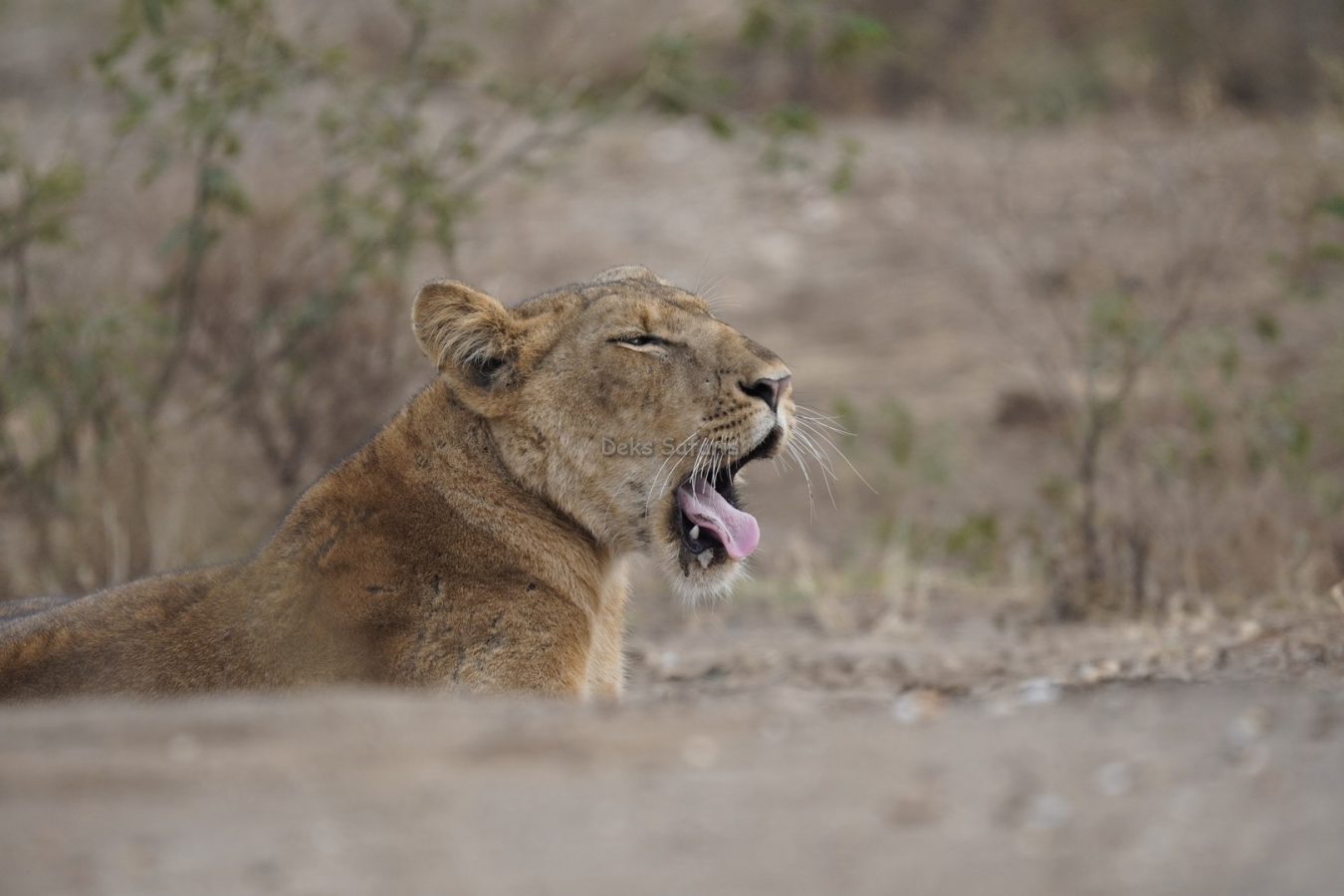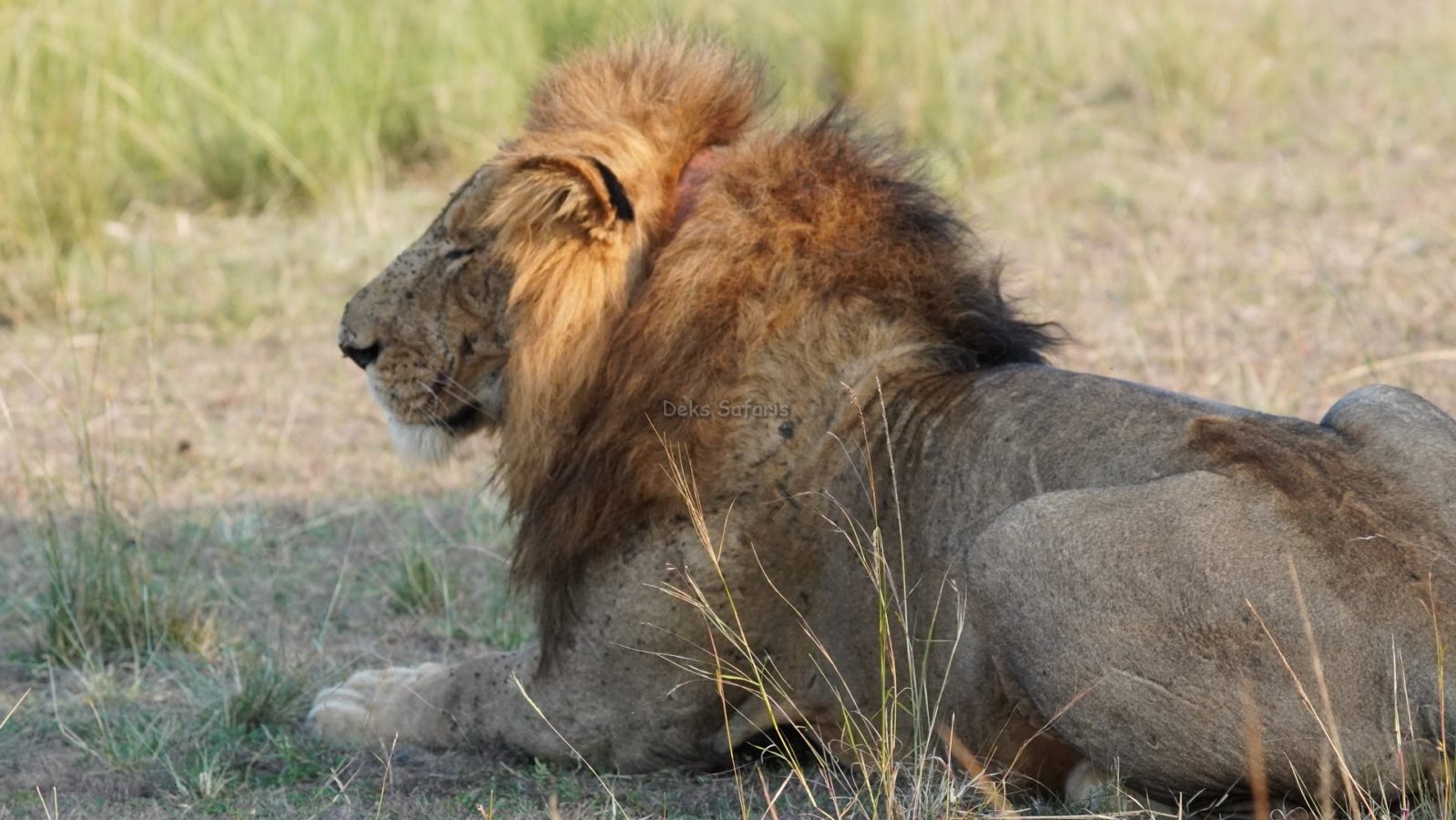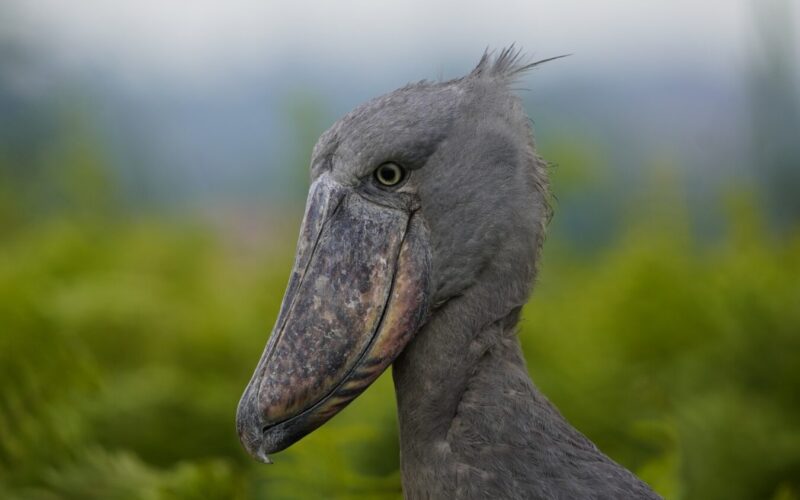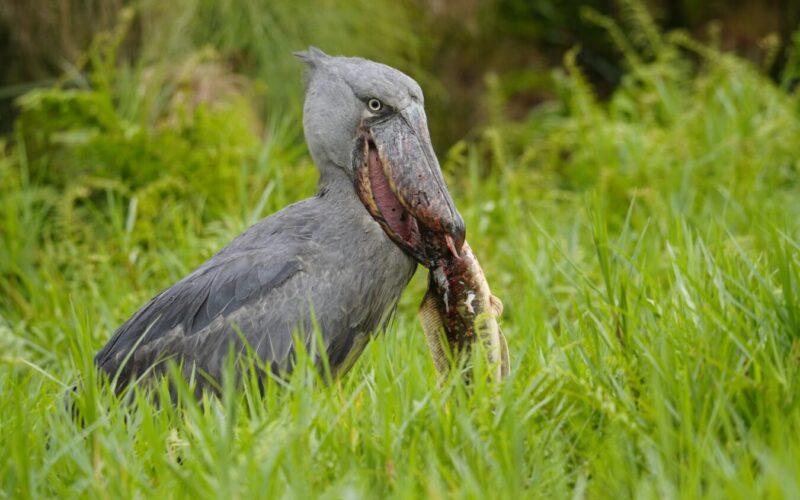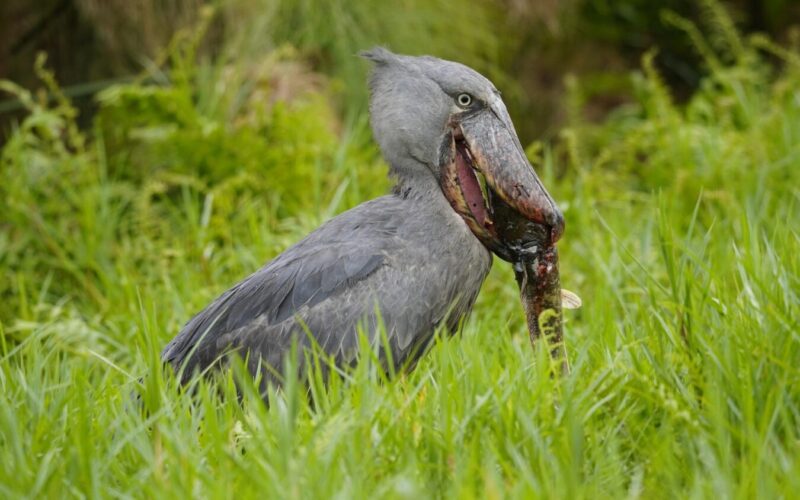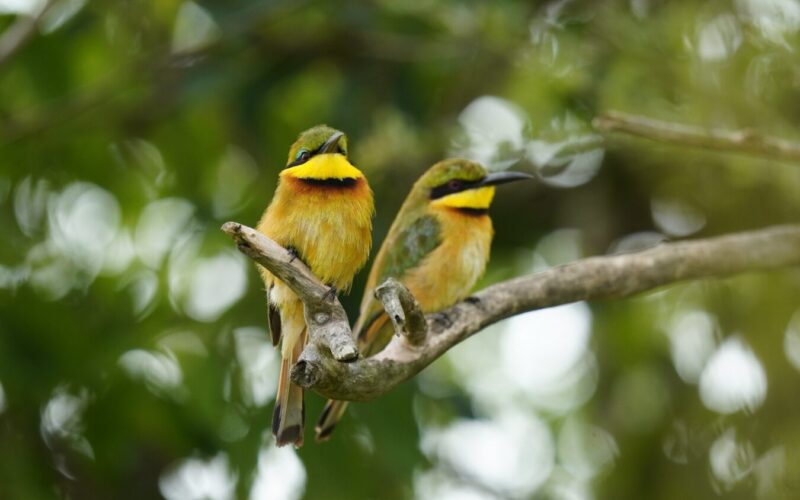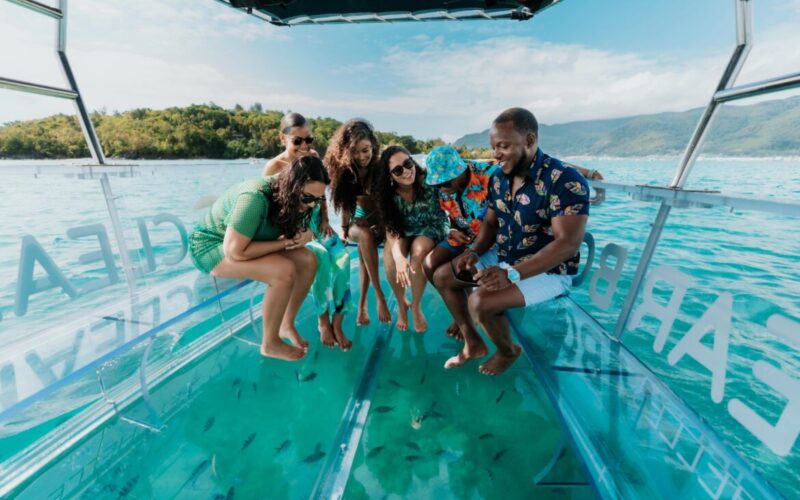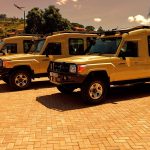
Tanzania Safari
September 29, 2025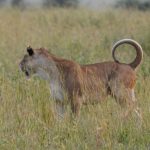
Which African Safari Is Better, Masai Mara or Serengeti?
September 29, 2025Which Tanzania Safari is Best? The Ultimate Tanzania Safaris Tour Guide
A Tanzania Safari offers more than breath-taking landscapes and dramatic wildlife encounters; it represents a journey into the very soul of Africa. Every traveler dream of setting foot on the Serengeti plains, watching thousands of wildebeest thunder across the savannah, or gazing into the Ngorongoro Crater where the Big Five roam freely. Yet when asked “Which Tanzania Safari is best?”, the answer depends on individual interests, preferred activities, and travel style. Some travelers prioritize the iconic Great Migration, while others seek remote wilderness, walking safaris, or cultural immersion.
Tanzania Safari holidays cater to all these desires by combining diverse ecosystems, abundant wildlife, and meaningful cultural exchanges. Deks Safaris & Tours helps travelers select the right circuit, season, and experiences, ensuring that each Tanzania Safari blends adventure, discovery, and comfort. With options ranging from Serengeti’s world-renowned spectacles to Ruaha’s hidden gems, there is a perfect Tanzania Safari for everyone.
Which Tanzania Safari is Best for the Great Migration? – Serengeti National Park
The Serengeti National Park is widely regarded as the crown jewel of Tanzania Safaris, and for good reason. This iconic park is home to the largest terrestrial migration on earth: the Great Migration of over two million wildebeest, zebras, and gazelles. Travelers who wonder which Tanzania Safari is best for dramatic wildlife spectacles will find their answer in Serengeti. From July to October, the northern Serengeti hosts the famous Mara River crossings, where herds plunge into crocodile-infested waters while predators wait along the banks. Earlier in the year, from January to March, the southern Serengeti witnesses calving season, when thousands of wildebeest give birth, attracting lions, hyenas, and cheetahs.
Beyond the migration, a Tanzania Safari in Serengeti provides year-round sightings of big cats, giraffes, elephants, and abundant birdlife. Game drives cover the park’s diverse regions, each with its own appeal: Seronera for predators, the Western Corridor for Grumeti River crossings, and the north for dramatic migration scenes. Balloon safaris over Serengeti at dawn also elevate the experience, offering unforgettable aerial views of wildlife and landscapes. For anyone asking which Tanzania Safari delivers the quintessential African adventure, Serengeti stands as the ultimate answer.
Which Tanzania Safari is Best for Big Five Wildlife? – Ngorongoro Crater
For travelers who seek concentrated wildlife viewing with minimal driving distances, the Ngorongoro Crater provides one of the best Tanzania Safari experiences. This UNESCO World Heritage Site formed millions of years ago when a massive volcano collapsed, leaving behind a caldera teeming with life. Within its 260-square-kilometer floor, the crater shelters nearly 30,000 animals, including all members of the Big Five. Few places in Africa offer such a high chance of spotting lions, elephants, buffaloes, leopards, and black rhinos in one location.
Beyond these, travelers often see hippos in freshwater pools, flamingos at seasonal lakes, and countless antelope species grazing on open plains. For those asking “Which Tanzania Safari is best for first-time visitors?”, Ngorongoro offers an accessible introduction with guaranteed wildlife encounters. Surrounding the crater, Maasai communities live in harmony with the land, and cultural visits can be added to a Tanzania Safari itinerary. With its blend of dramatic scenery and unmatched density of animals, Ngorongoro represents one of the most rewarding choices for a Tanzania Safari holiday.
Which Tanzania Safari is Best for Unique Activities? – Nyerere and Tarangire
Some travelers desire more than traditional game drives, and wonder which Tanzania Safari offers variety in activities. Nyerere National Park, formerly Selous Game Reserve, stands out as Africa’s largest protected area and a destination where boating and walking safaris complement vehicle-based exploration. Cruising the Rufiji River provides sightings of hippos, crocodiles, and abundant birdlife from a refreshing perspective. Walking safaris here immerse guests in the wilderness, focusing on smaller creatures, tracks, and plant life often missed during game drives. Tarangire National Park, another unique option, is renowned for its massive elephant herds and iconic baobab trees.
During the dry season, the Tarangire River attracts huge concentrations of animals, creating some of the most dramatic wildlife scenes outside Serengeti. For travelers asking “Which Tanzania Safari is best for elephants and birdwatching?”, Tarangire is the answer, boasting over 500 bird species. Together, Nyerere and Tarangire highlight how a Tanzania Safari can go beyond standard activities, offering variety, intimacy, and authentic adventure.
Which Tanzania Safari is Best for Primate Lovers? – Gombe Stream National Park
Travelers who prioritize primate encounters often ask which Tanzania Safari is best for chimpanzee tracking. Gombe Stream National Park, located on the shores of Lake Tanganyika, provides one of Africa’s finest chimpanzee experiences. Here, travelers trek through lush forests, guided by rangers who lead them to families of habituated chimpanzees. Observing these primates in their natural environment creates an intimate and moving encounter.
Beyond chimpanzees, Gombe is home to olive baboons, red colobus monkeys, and diverse birdlife. Combining Gombe with a Tanzania Safari focused on savannah wildlife allows guests to enjoy both primate and big-game experiences. Though more remote than Serengeti or Ngorongoro, Gombe rewards adventurers who want their Tanzania Safari to include rare and meaningful moments with primates.
Which Tanzania Safari is Best for Remote Experiences? – Ruaha National Park
Ruaha National Park represents the raw and wild heart of Tanzania Safaris, ideal for travelers seeking solitude and exclusivity. As the largest national park in the country, Ruaha covers vast savannahs, rocky escarpments, and baobab valleys. Its remoteness ensures low visitor numbers, creating a more private safari atmosphere. Travelers wondering which Tanzania Safari delivers untouched wilderness will find Ruaha the perfect choice. The park is home to over 10,000 elephants, large lion prides, leopards, cheetahs, and endangered African wild dogs.
Birdwatchers delight in more than 570 species recorded here. Walking safaris in Ruaha emphasize immersion and allow guests to learn survival skills from expert guides. With fewer lodges, most located along rivers, Ruaha delivers intimacy and exclusivity that few parks can match. For seasoned safari-goers, Ruaha answers the question of which Tanzania Safari provides the most authentic wilderness adventure.
Best Time for a Tanzania Safari: When Should You Go?
The best time for a Tanzania Safari depends largely on what travelers want to experience, as each season offers unique rewards. From June to October, the dry season provides optimal conditions for Tanzania Wildlife Safaris because animals gather near rivers and waterholes, creating spectacular game-viewing opportunities. During these months, Tanzania Game Drives in the Serengeti, Tarangire, and Ruaha offer easy sightings of elephants, lions, leopards, and herds of wildebeest. This season also marks the famous Mara River crossings, an unmissable highlight of the Serengeti.
In contrast, the green season from November to March paints Tanzania Tours in vibrant colors. Birdwatchers find these months ideal as migratory species arrive, making Tanzania Safari Holidays rich in both sound and sight. Calving season occurs between January and March, drawing predators and offering dramatic encounters in the southern Serengeti plains. For Walking Safaris in Tanzania, the slightly cooler months of June and July make trekking more comfortable, while April and May, though less popular due to rains, offer lush landscapes and lower lodge prices.
So, which Tanzania Safari is best for you? If dramatic wildlife spectacles attract you, aim for the dry months. If birdlife, fewer tourists, and discounted accommodations appeal, the wet months may suit better. A Tanzania Tour designed with Deks Safaris & Tours ensures that timing matches your desired experience, whether seeking Walking Safaris, Tanzania Safari Holidays, or Gorilla Trekking extensions.
Activities Beyond Game Drives: What Can You Do on a Tanzania Tour?
While traditional Tanzania Game Drives remain central to every Tanzania Safari, visitors often ask what other activities can enrich their experience. The answer is plenty. From hot-air balloon rides over the Serengeti to cultural visits in Maasai villages, Tanzania Safaris offer diversity beyond wildlife encounters. Balloon safaris, best done at sunrise, provide an unforgettable aerial perspective of herds moving across golden plains.
Walking Safaris in Tanzania offer a closer and more personal experience, where every footprint and rustle in the bush tells a story. Travelers keen on water-based experiences can enjoy boating excursions in Nyerere National Park, where hippos, crocodiles, and birdlife thrive along the Rufiji River. Photographers may prefer special Tanzania Walking Tours guided by experts who share insights into animal behavior and landscapes.
For travelers looking for relaxation, many Tanzania Safari Lodges offer spa treatments, infinity pools overlooking savannahs, or sundowner setups under glowing skies. Adding cultural encounters to Tanzania Tours, such as visiting Hadzabe hunter-gatherers or Chagga coffee farmers near Kilimanjaro, enriches the journey with human connections.
So, which Tanzania Safari is best for adventurers seeking variety? Those craving action may choose a mix of Tanzania Wildlife Safaris with balloon rides, canoeing, or bush walks. Others may prefer a Tanzania Tour focusing on relaxation paired with light activities. With Deks Safaris & Tours, itineraries balance thrilling wildlife encounters with meaningful cultural and leisure experiences.
Walking Safaris in Tanzania: A Closer Look at the Wilderness
Walking Safaris in Tanzania bring travelers face-to-face with the raw beauty of African wilderness. Unlike Tanzania Game Drives, these experiences slow the pace and sharpen awareness. Every sound, scent, and movement become magnified as expert guides lead small groups through safe wilderness areas. Locations like Ruaha, Selous (Nyerere), and Serengeti offer excellent opportunities for Walking Safaris in Tanzania.
Tanzania Walking Safaris allow participants to learn about smaller details often missed from vehicles. Travelers see fresh animal tracks, discover medicinal plants, and understand how ecosystems interact. For photographers, Tanzania Walking Tours provide unique perspectives, capturing wildlife at eye level and landscapes without distraction. The presence of armed rangers ensures safety while allowing guests to fully immerse themselves.
Many lodges in southern parks specialize in Tanzania Walking Safaris, offering multi-day treks with mobile camps set up in wild settings. Evening campfires under star-studded skies create unforgettable memories. Walking Safaris in Tanzania also pair well with traditional Tanzania Safaris Holidays, creating a balance between adventure and relaxation.
So, which Tanzania Safari is best for walkers? Those who enjoy physical activity and deeper connection with nature find Tanzania Walking Safaris incredibly rewarding. Deks Safaris & Tours tailors’ itineraries to blend Walking Safaris, Tanzania Wildlife Safaris, and cultural visits, ensuring every traveler experience wilderness in multiple dimensions.
Adding Gorilla Trekking to Your Tanzania Safari
Many travelers wonder whether they can combine a Tanzania Safari and Gorilla Trekking in one trip. The answer is yes, and it creates one of Africa’s most powerful travel experiences. While Tanzania is famed for Tanzania Wildlife Safaris, neighboring Uganda and Rwanda offer unforgettable gorilla trekking adventures. Extending a Tanzania Tour to include Gorilla Trekking gives guests a once-in-a-lifetime chance to observe endangered mountain gorillas in their natural habitat.
After Tanzania Safari Holidays exploring Serengeti plains or Ngorongoro Crater, travelers can fly to Bwindi Impenetrable National Park in Uganda or Volcanoes National Park in Rwanda. Gorilla Trekking demands moderate fitness, as trails lead through dense forests and mountainous terrain. The reward is extraordinary—spending an hour with a gorilla family, watching playful infants, powerful silverbacks, and nurturing mothers.
This combination appeals to travelers seeking both diversity and depth. Tanzania Wildlife Safaris deliver the vast herds, predators, and open savannahs, while Gorilla Trekking immerses visitors in intimate rainforest encounters. Such a combination strengthens the appeal of Tanzania Tours, especially for travelers flying long distances and aiming for maximum African experiences.
So, which Tanzania Safari is best for those who want gorillas too? The Northern Circuit fits perfectly with a Gorilla Trekking extension, with flights connecting Arusha to Kigali or Entebbe. Deks Safaris & Tours arranges seamless logistics for guests seeking both Tanzania Walking Safaris and Gorilla Trekking, ensuring every detail contributes to a flawless adventure.
Cultural Tourism: Meeting Tanzania’s People
A Tanzania Safari is not only about wildlife; cultural encounters enrich every journey. Tanzania Tours allows travelers to meet diverse communities, each offering unique traditions and ways of life. The Maasai remain the most recognized, often welcoming guests into their bomas to share stories, dances, and beadwork. Visitors learn about cattle culture and resilience on Tanzania Safaris Holidays that include Maasai cultural stops.
In northern Tanzania, travelers can visit the Hadzabe hunter-gatherers near Lake Eyasi. Walking with them reveals ancient survival skills, from tracking game to gathering honey. Similarly, the Datoga, known for blacksmithing, showcase traditional tools and jewelry making. Around Kilimanjaro, Chagga farmers introduce guests to coffee cultivation, guiding them from bean to cup in immersive tours.
Cultural experiences pair beautifully with Tanzania Wildlife Safaris, adding human connections to natural wonders. Lodges in Tarangire and Ngorongoro often collaborate with local communities, offering authentic interactions without intruding on daily life. Guests who choose Walking Safaris in Tanzania may combine treks with village visits, learning how communities coexist with wildlife.
So, which Tanzania Safari is best for cultural explorers? The Northern Circuit offers the richest blend of wildlife and community visits. Deks Safaris & Tours ensures cultural encounters are respectful, enriching, and integrated seamlessly with Tanzania Tours. These exchanges deepen appreciation for both people and land, making Tanzania Safari Holidays unforgettable.
Accommodation Options: Where Do You Stay on a Tanzania Safari?
When planning Tanzania Safaris, one of the most important questions travelers ask is about accommodations. Choices range from luxury lodges and tented camps to budget-friendly options, ensuring every traveler finds comfort. For those seeking indulgence, Tanzania Safari Holidays offer five-star lodges with infinity pools overlooking Serengeti plains, gourmet dining, and spa treatments. These lodges often include private game drives, making each Tanzania Tour exclusive.
Mid-range tented camps balance comfort with authentic safari atmosphere. They feature en-suite bathrooms, hearty meals, and close proximity to wildlife. Budget-friendly options, including basic lodges and public campsites, allow backpackers to enjoy Tanzania Wildlife Safaris without stretching finances. Travelers choosing Walking Safaris in Tanzania often stay in mobile camps that move with trekking routes, providing intimacy and immersion.
Unique experiences also exist. Treehouse-style lodges in Tarangire or crater-rim accommodations in Ngorongoro offer unforgettable perspectives. Nyerere and Ruaha lodges specialize in seclusion, perfect for those who want fewer crowds. Whether luxurious or simple, every lodge aims to enhance Tanzania Tours by placing guests near wildlife action or cultural attractions.
So, which Tanzania Safari is best for accommodation variety? The Northern Circuit offers more choices, while the Southern Circuit promises exclusivity. With Deks Safaris & Tours, accommodations are carefully selected to match traveler preferences, whether luxury, mid-range, or adventurous Tanzania Walking Safaris.
Tanzania Safari Costs: What Should You Budget?
Travelers often ask about the cost of Tanzania Safaris, and prices vary depending on style, season, and inclusions. Tanzania Safari Holidays can start from budget-friendly tours costing $200–$300 per person per day, covering basic lodges, meals, and shared Tanzania Game Drives. Mid-range Tanzania Wildlife Safaris average $400–$600 per person per day, offering better accommodations and private tours. Luxury Tanzania Tours range from $800 to $1,500 daily, with exclusive lodges, flights between parks, and personalized service.
Factors influencing costs include the circuit chosen. Northern Circuit Tanzania Tours may be more expensive due to higher demand, while Southern Circuit safaris often provide better value. Activities like hot-air balloon rides, Walking Safaris in Tanzania, or Gorilla Trekking extensions add extra expenses but also elevate experiences. Park fees, guide expertise, and transport methods also play major roles in determining Tanzania Safari budgets.
So, which Tanzania Safari is best for your budget? A carefully crafted Tanzania Tour balances cost with desired activities. Travelers should also account for tipping, visas, and international flights. Booking with Deks Safaris & Tours ensures transparency and guidance, tailoring Tanzania Safari Holidays that meet financial plans while delivering unforgettable experiences.
Travel Tips: Preparing for Tanzania Safaris Holidays
Preparation is essential for Tanzania Safaris Holidays, ensuring comfort, safety, and enjoyment. Travelers should pack lightweight clothing in neutral colors for Tanzania Game Drives, avoiding bright hues that disturb animals. Sturdy walking shoes are vital for Walking Safaris in Tanzania, while layers keep guests warm during cool mornings and evenings. Sunscreen, hats, and insect repellent remain must-have items on every Tanzania Tour.
Health precautions matter. Vaccinations against yellow fever may be required, and malaria prevention tablets are strongly recommended. Travel insurance should cover medical emergencies, trip delays, and activities like Tanzania Walking Tours or hot-air balloon rides. Carrying reusable water bottles helps with hydration during Tanzania Wildlife Safaris, and eco-friendly travelers can minimize plastic use.
Respect for culture and wildlife enriches Tanzania Tours. Guests should ask before photographing people, maintain safe distances from animals, and follow guide instructions at all times. Learning a few Swahili phrases adds warmth to cultural interactions during Tanzania Safaris Holidays.
So, which Tanzania Safari is best prepared for? Those who arrive informed, equipped, and open-minded enjoy smoother, safer, and more meaningful experiences. Deks Safaris & Tours provides pre-departure guidance to ensure every Tanzania Safari and Gorilla Trekking extension unfolds seamlessly.
Frequently Asked Questions: Answering Traveler Concerns
Many travelers planning Tanzania Safaris share similar questions. One common question is: which Tanzania Safari is best for first-timers? The Northern Circuit, with Serengeti and Ngorongoro, suits beginners due to accessibility and diversity. Another question asks about Walking Safaris in Tanzania are they safe? Yes, with armed rangers and professional guides ensuring safety while maximizing immersion.
Another frequent inquiry is about Tanzania Safari Holidays and family travel. Children above a certain age can enjoy game drives, though some lodges have age restrictions. Families often choose private Tanzania Tours for flexibility. Many travelers also ask whether Tanzania Safaris Holidays can include Gorilla Trekking. The answer is yes, with extensions to Uganda or Rwanda easily arranged after a Tanzania Wildlife Safari.
Questions about budget, best times to travel, and packing lists are common. Costs vary widely, as explained earlier, but planning with Deks Safaris & Tours ensures transparency. Packing lightweight clothing, sturdy shoes, and proper medication ensures comfort.
So, which Tanzania Safari is best for you? It depends on priorities wildlife spectacles, Walking Safaris, cultural visits, or Gorilla Trekking. Personalized Tanzania Tours designed by Deks Safaris & Tours address all these concerns, creating tailored journeys.
Which Tanzania Safari Is Best for You?
Choosing the best Tanzania Safari depends entirely on your interests, travel style, and expectations. Serengeti offers the Great Migration, Ngorongoro boasts concentrated wildlife, and Ruaha promises remote wilderness. For those drawn to diversity, combining Northern and Southern Circuit parks brings balance. Adding Gorilla Trekking enriches journeys with rare primate encounters, while Walking Safaris in Tanzania provide intimacy with landscapes often missed on game drives.
So, which Tanzania Safari is best? The one that resonates with your spirit of adventure. Whether chasing predators across Serengeti plains, exploring cultural depth with Maasai, or trekking through Ugandan forests for gorillas, every Tanzania Tour leaves lasting impressions. Tanzania Safaris Holidays are not one-size-fits-all; they are personal, crafted experiences.
With Deks Safaris & Tours, every Tanzania Wildlife Safari becomes more than a journey. It becomes a story of discovery, connection, and wonder. Travelers worldwide can trust Deks Safaris & Tours to design journeys reflecting expertise, authenticity, and trust. Tanzania Tours transforms dreams into memories, making Tanzania the ultimate destination for wildlife, culture, and adventure seekers.

